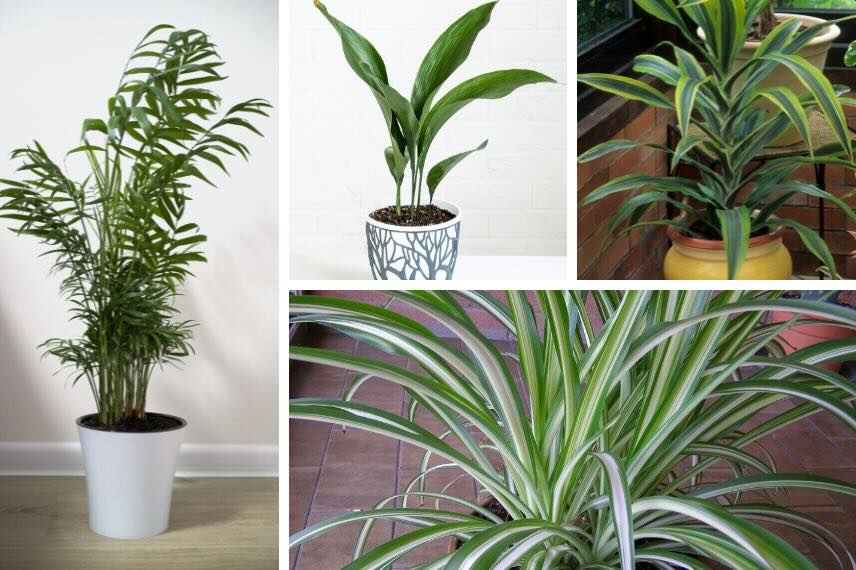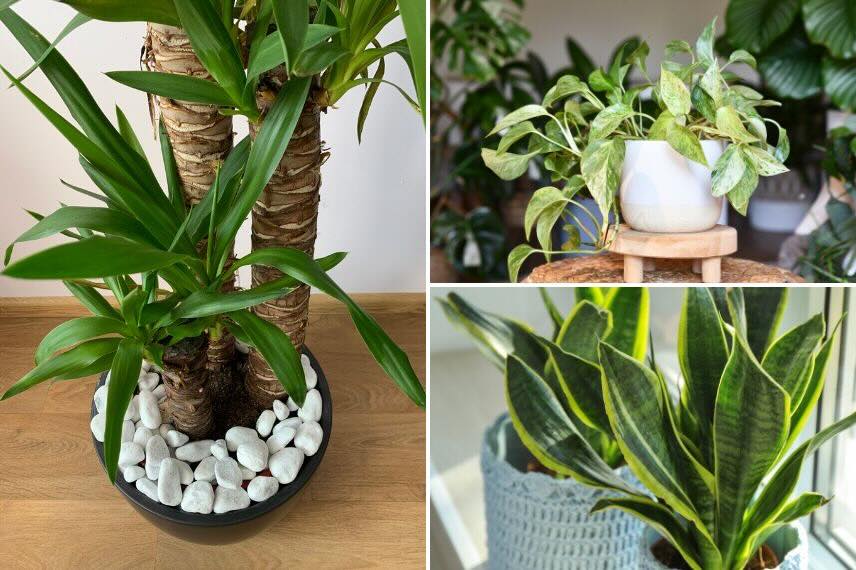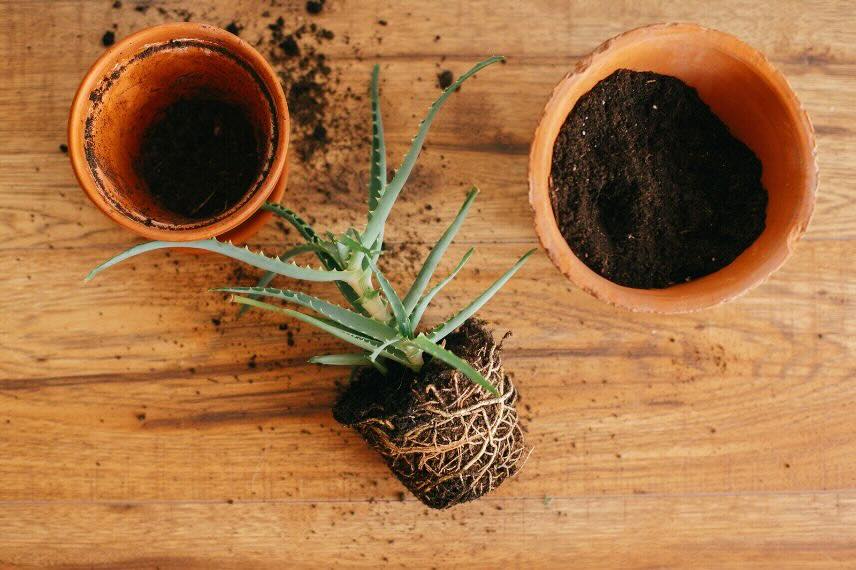
Indestructible Houseplants: 7 Foolproof Choices for a Lush Interior Without the Hassle
Our selection
Contents
Who hasn’t felt that quiet pang of guilt upon discovering a wilted plant, forgotten on a windowsill? Limp stems, dried-out leaves, or worse still: a pot with a faint whiff of decay. Yet, it’s no crime to lack green fingers or to forget regular watering. Life is busy enough without having to manage a horticultural schedule.
Fortunately, certain species of houseplants are true survivors, able to tolerate irregular watering, ordinary compost, and even far-from-ideal light conditions. These plants ask for just one thing: a quiet corner to grow in peace, without stress or special demands.
These are the “unkillables” that this article celebrates. Hardy, attractive, low-maintenance plants, perfect for those who want a touch of greenery at home without having to become botanists overnight. Because a home can be welcoming, lively and verdant even when you’re no expert, discover our selection and some bonus tips.

Some particularly hardy species, clockwise: Chamaedorea elegans, Aspidistra, Dracaena, Chlorophytum
The selection: 7 indestructible plants to adopt with your eyes closed
When looking to green up your home without spending too much time or energy, certain plants stand out as champions of resilience. They tolerate watering mistakes, thrive in standard potting soil, and accept imperfect light conditions… yet still manage to beautify the room. Here are seven truly indestructible plants, both decorative, tolerant and easy to care for.
Mother-in-law’s Tongue or Sansevieria: striking, robust and self-sufficient
Nicknamed “mother-in-law’s tongue”, this architectural plant is one of the hardiest in the plant kingdom. It adapts to almost anything: low or indirect light, dry heat, infrequent watering. Its secret? Thick leaves that store water like a built-in reservoir. In winter, it can go a month without a single drop.
The Sansevieria thrives equally in shady corners or by a window. It rarely needs repotting, and standard houseplant compost suits it perfectly. Bonus: its upright habit means it doesn’t visually clutter your space.
Pothos: generous, trailing and versatile
With its flexible stems and heart-shaped leaves, the Pothos (Epipremnum aureum) is a generous liana that grows equally well in pots or hanging baskets. It grows quickly, roots easily in water, and accepts a wide range of conditions. It tolerates missed waterings and filtered light, though complete darkness should be avoided.
Pothos is often recommended for beginners as it delivers quick results. It’s also highly adaptable: trained around a support, it climbs; hung in a basket, it cascades. Simple multipurpose compost and a drink every fortnight keep it happy.
Aspidistra: tough, undemanding and long-lasting
This Victorian favourite is making a comeback in modern interiors, and rightly so – it earns its “cast iron plant” nickname. The aspidistra eliator grows slowly but with reassuring regularity, even in poorly lit spots. It withstands dry air, missed waterings, draughts, and even some neglect.
Its broad, glossy foliage makes a handsome statement. It needs little space or frequent care – watering every 10-15 days usually suffices. Perfect for dark corners in hallways or bedrooms where few plants will survive.
Chamaedorea elegans: a compact, elegant and easy dwarf palm
This decorative miniature palm, the Chamaedorea, brings tropical freshness without demanding tropical conditions. It prefers gentle light, tolerates partial shade, and likes some humidity without excess. Moderate watering suits it well.
This compact palm fits small spaces perfectly. It grows slowly but steadily, adapting beautifully to pot life. We love its understated elegance and airy appearance, ideal for calm rooms or offices.
Spider Plant: perennial, prolific and airy
The Spider Plant is arguably one of the easiest plants to grow. It withstands missed waterings, grows rapidly, and propagates itself via dangling plantlets. Perfect for hanging or placing high to let its long leaves cascade.
It enjoys bright indirect light but adapts to shadier spots. Simply water when the top few centimetres of soil dry out.
Yucca: striking, sunny and indestructible
The Yucca has an almost architectural presence with its thick trunk and pointed leaves. It’s very undemanding: preferring bright spots but tolerating less ideal conditions. Its main dislike is overwatering. In practice, it’s better to neglect it slightly than fuss over it.
Its growth is slow but steady, living many years in pots without issues. Once established, it needs minimal attention – perfect for spacious rooms or bright entrances.
Dracaena: upright, decorative and tolerant
The Dracaena is an elegant plant with slender foliage. It adapts well to indoor life and tolerates occasional missed waterings. Preferring indirect light, it thrives in moderately lit rooms.
Growing vertically, it’s ideal for furnishing corners without occupying floor space. Low-maintenance with graphic appeal, it suits contemporary interiors perfectly.
These seven plants share remarkable tolerance for imperfect growing conditions. They adapt, forgive mistakes, and keep growing steadily despite irregular watering or occasional light shortages. Beyond being tough, they’re attractive and bring real presence to your home.
A green interior shouldn’t cause stress, but rather offer a simple way to add life, colour and calm to daily life. These indestructible plants prove just that.

Yucca on the left, Pothos above and Sansevieria below: three plants that forgive many cultivation mistakes
Tips to keep them happy (and alive)
Let the compost dry out before watering
One of the most common mistakes with indoor plants is overwatering. Contrary to what one might think, most plants don’t die of thirst… but of drowning. The right approach is to feel the soil before each watering: if it’s still moist on the surface, it’s better to wait. Many resilient plants even prefer a bit of dryness between waterings. It’s a simple way to avoid the dreaded “wet feet” that causes root rot.
No need for fancy fertilisers: a little in spring is enough
These hardy plants don’t need competition-level feeding. A dose of universal fertiliser once or twice in spring is more than enough to support their growth. The rest of the time, they manage perfectly well on their own. There’s no need for multiple products or a rigid schedule. The watchword here is simplicity.
Rotate your plants: a small gesture that makes all the difference
Even resilient plants have their preferences when it comes to light, and they won’t hesitate to grow towards it. To prevent them from becoming lopsided or bare on one side, simply turn their pot a quarter turn every fortnight. This encourages more balanced growth and also lets you check their overall condition without thinking about it. As a bonus, it gives your decor a little refresh.
Repotting occasionally is like giving them a gift
Even the hardiest plants need a bit of renewal at some point. Repotting isn’t just about pot size – it’s also an opportunity to give them fresh compost, richer in nutrients, and better drainage.
Generally, repotting every two to three years is more than enough for resilient plants. It’s best done in spring when growth is slowly resuming. This is the ideal time: plants are waking up and adapt more easily to a new container.
Some signs it’s time to repot:
-
roots are coming out of the drainage holes or forming a dense “ball” at the bottom of the pot;
-
the plant seems stagnant or declining despite regular watering;
-
water runs through the compost too quickly, a sign the growing medium is exhausted.
A good quality universal compost works perfectly for these undemanding species. There’s no need to upgrade to an XXL pot: it’s better to repot gradually, choosing a container just slightly larger than the previous one.

Repot into a pot only slightly larger
- Subscribe!
- Contents
































Comments